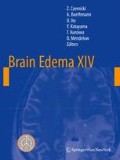Abstract
In this study, neoplastic perfusion abnormalities were investigated by computed tomography perfusion (CTP) scanning in 38 patients with solitary intra-axial brain tumors (19 with high grade gliomas, 7 with low grade gliomas and 12 with brain metastasis). Regional cerebral blood flow (rCBF), cerebral blood volume (rCBV), mean transit time (rMTT) and permeability surface flow (rPSF) levels were measured in two different regions of interest: (1) enhancing or non-enhancing tumor tissue and (2) a mirror area of apparently normal brain tissue located in the contralateral hemisphere. rCBF mean levels were greater in tumoral tissue than in the contralateral area for high-grade gliomas (p < 0.02). rCBV and rPSF mean values were higher in tumoral tissue than in the contralateral area for high-grade gliomas (p < 0.01 and p < 0.05, respectively) and metastasis (p < 0.05 and p < 0.001, respectively). rCBV mean values of tumoral tissue were greater in high-grade than in low-grade gliomas (p < 0.05). rPSF mean levels of tumoral tissue were higher in metastasis than in low-grade gliomas (p < 0.02). These findings indicate that multi-parametric CTP mapping may contribute to differential diagnosis of solitary intra-axial brain tumors.
Access this chapter
Tax calculation will be finalised at checkout
Purchases are for personal use only
References
Cenic A, Nabavi DG, Craen RA, Gelb AW, Lee T-Y (2000) A CT method to measure hemodynamics in brain tumors: validation and application of cerebral blood flow maps. AJNR Am J Neuroradiol 21:462–470
Cha S (2006) Update on brain tumor imaging: from anatomy to physiology. AJNR Am J Neuroradiol 27:475–487
Ding B, Ling HW, Chen KM, Jiang H, Zhu YB (2006) Comparison of cerebral blood volume and permeability in preoperative grading of intracranial glioma using CT perfusion imaging. Neuroradiology 48:773–781
Eastwood JD, Provenzale JM (2003) Cerebral blood flow, blood volume, and vascular permeability of cerebral glioma assessed with dynamic CT perfusion imaging. Neuroradiology 45:373–376
Ellika SK, Jain R, Patel SC, Scarpace L, Schultz LR, Rock JP, Mikkelsen T (2007) Role of perfusion CT in glioma grading and comparison with conventional MR imaging features. AJNR Am J Neuroradiol 28:1981–1987
Jain R, Scarpace L, Ellika S, Schultz LR, Rock JP, Rosenblum ML, Patel SC, Lee TY, Mikkelsen T (2007) First-pass perfusion computed tomography: initial experience in differentiating recurrent brain tumors from radiation effects and radiation necrosis. Neurosurgery 61:778–786
Lee R, Cheung RTF, Hung KN, Au-Yeung KM, Leong LLY, Chan FL, Lee TY (2004) Use of CT perfusion to differentiate between brain tumor and cerebral infarction. Cerebrovasc Dis 18:77–83
Mor V, Laliberte L, Morris JN, Wiemann N (1984) Karnofsky performance status scale. An examination of its reliability and validity in a research setting. Cancer 53:2002–2007
Provenzale JM, Mukundan S, Barboriak DP (2006) Diffusion-weighted and perfusion MR imaging for brain tumor characterization and assessment of treatment response. Radiology 239:632–649
Roberts HC, Roberts TPL, Lee T-Y, Dillon WP (2002) Dynamic, constrast-enhanced CT of human brain tumors: quantitative assessment of blood volume, blood flow, and microvascular permeability: report of two cases. AJNR Am J Neuroradiol 23:828–832
Wintermark M, Essay M, Barber E, Bodily K, Dillon WP, Eastwood JD, Glenn CT, Gradin CB, Pederast S, Susie JF, Maria T, Anarchic G, Camille JM, Doused V, Yonas H (2005) Comparative overview of brain perfusion imaging techniques. Stroke 36:e83–e99
Young RJ, Knopp EA (2006) Brain MRI: tumor evaluation. J Magn Reson Imaging 24:709–724
Author information
Authors and Affiliations
Corresponding author
Editor information
Editors and Affiliations
Rights and permissions
Copyright information
© 2010 Springer-Verlag/Wien
About this paper
Cite this paper
Fainardi, E. et al. (2010). Potential Role of CT Perfusion Parameters in the Identification of Solitary Intra-axial Brain Tumor Grading. In: Czernicki, Z., Baethmann, A., Ito, U., Katayama, Y., Kuroiwa, T., Mendelow, D. (eds) Brain Edema XIV. Acta Neurochirurgica Supplementum, vol 106. Springer, Vienna. https://doi.org/10.1007/978-3-211-98811-4_53
Download citation
DOI: https://doi.org/10.1007/978-3-211-98811-4_53
Published:
Publisher Name: Springer, Vienna
Print ISBN: 978-3-211-98758-2
Online ISBN: 978-3-211-98811-4
eBook Packages: MedicineMedicine (R0)

